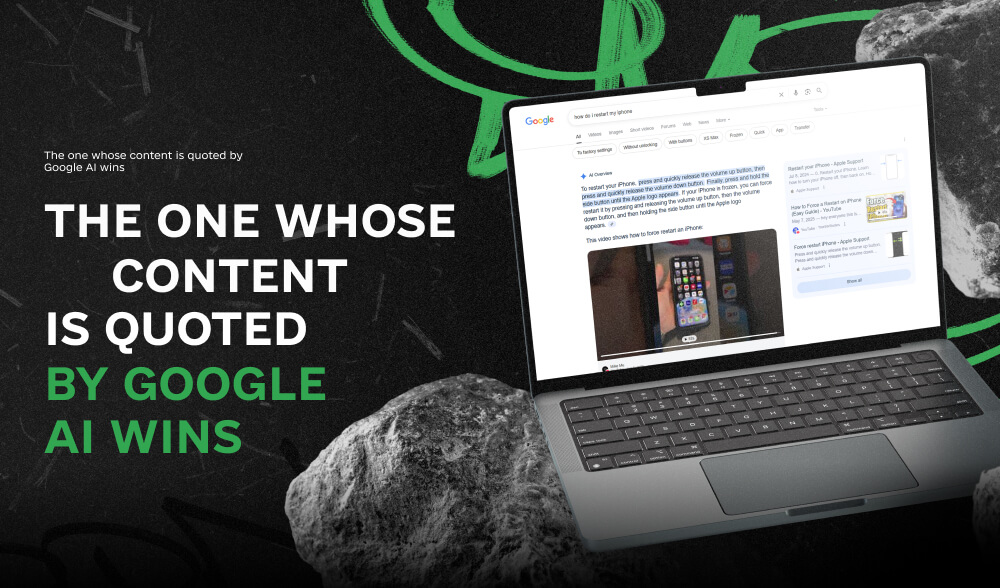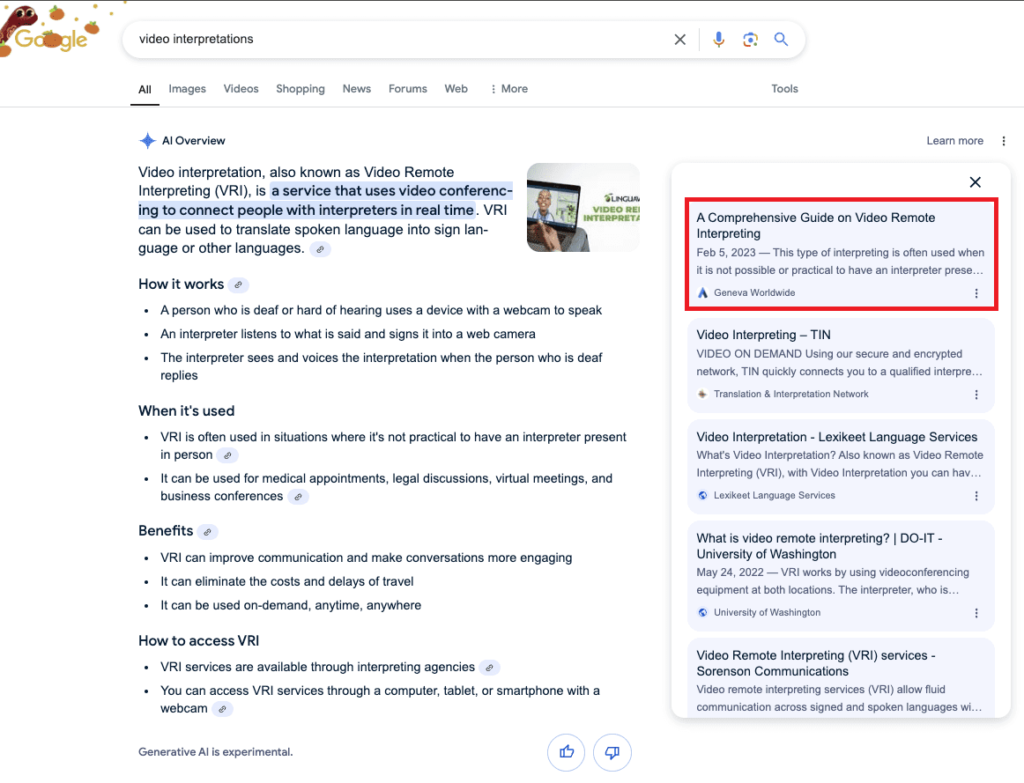Don't miss interesting news

In the summer of 2024, Google launched a large-scale rollout of Search Generative Experience (SGE). Although it is not officially available everywhere yet, AI responses are already being actively tested in the US, India, Japan, and Germany, and this is just the beginning.
Against this background, the old rumors have flared up again: “SEO is dead, all clicks will be taken by AI, horror.”
But it’s not true: SEO is not dead, it has just changed. It has changed before – for BERT, for voice search, for mobile-first. It’s just that now the content has to be ready for the fact that it’s not a human working with it, but an algorithm that tries to collect the answer for you.
Search Generative Experience (SGE) is when an AI-generated snippet appears at the top of Google search results, briefly answering the query, and below it, the sources from which the answer was “collected”.

Is it bad for clicks? Not so good, but not the end of the world. After all, if your site is included in these sources, you will still be seen. And if you also mentioned the brand in the text natively, it’s a win-win.
With the introduction of Search Generative Experience, classic SEO as we used to work with it is no longer sufficient. Formally, technical factors, keyword optimization, page structure – all of this remains. But the very principle of “consumption” of your content is changing.
Users no longer have to go to the website to get an answer. AI simplifies this path for him. And that is why new approaches to optimization are emerging:
The focus is on how content is “perceived” not by a human but by a generative model. Relatively speaking, whether it can quickly extract a clear fact, definition, figure, argument from your page.
Optimization for systems that try not to provide a list of links but to form a ready-made answer. This is not only Google, but also Perplexity, Bing Copilot, ChatGPT-Search, and others.
Content should be not just long, but logically built and easily structured:
AI does not read between the lines. It needs to:
Google (and not only it) prefers content that demonstrates:
Thus, an expert opinion with factual examples and validation has a much higher chance of being included in an AI response than a text with poor structure and vagueness.
GEO is the answer to the fact that AI becomes the first “reader” of your website. And if you want your pages to be visible in SGE AI results or cited in the responses of other systems, you should already review the structure, logic, and presentation of your content.
Geneva Worldwide is an American company with a 120-year history in the field of translation and language services.
Problem:
In the competitive market of simultaneous and video translation services, the company sought to improve its visibility on Google, in particular, to get into the new formats of AI Overviews.
What we did (GEO approach):
Conducted targeted optimization of the Video Remote Interpretation Services key page:
Result:
The page was included in Google’s AI Overviews block for relevant queries. This allowed us to get additional visibility without increasing advertising costs.

American researcher Sanjay Rao and others have analyzed how content of different formats works in AI search engines (Perplexity, You.com, etc.).
What they found:
Content that contains facts, dates, numbers, and clear definitions is more likely to be used in AI answers.
Figure from the study: +37-40% visibility compared to plain text without it.
This is a digital agency from the United States, founded by one of the most recognizable marketers in the world, Neil Patel. The team regularly works with content, SEO, and lead generation for B2B and B2C businesses.
Their task was:
Adapt existing blog articles to the new search conditions so that the content could “catch” Google’s search engine results engine (SGE) and get into AI responses.<
As a side effect, the general semantics of the blog has improved and the positions for long-tail queries, which are traditionally difficult to rank, have increased.
No need for lyrical introductions that take up half the screen. Therefore, the first paragraph after H1 should give a brief, essentially, explanation of the request. Not an introduction, not a philosophy, but a definition or a specific answer.
For example:UGC (user-generated content) is content created by users, not by the brand: comments, photos, reviews, videos, etc.
For generative systems, it is not only what is written but also how it is structured that matters:
SGE (as well as classic SEO) values expertise and completeness of topic coverage.
The “pillar + cluster” model works better than random articles.
What it means:
This is how the semantic core of the topic is formed, which AI reads as a complex authoritative block.
Generative algorithms actively use not only text but also structured visual elements:
Generative search does not cancel technical optimization. On the contrary, it becomes even more critical, because the algorithm “reads” your site directly, without a human as an intermediary.
SGE actively uses Schema to generate answers.
The clearer the content is marked up, the more likely it is to be used as a part of the answer.
Google switched to mobile-first indexing a long time ago, and with the advent of SGE, loading speed and HTML cleanliness have become even more important:
You need to take into account:
In other words, measure not only traffic but also influence.
SGE is not a threat, but the next round of search evolution. Algorithms are changing the rules of the game, but the principle remains the same: useful, structured, authoritative content will always win.
Now, the winner is the one whose content is understandable not only to people but also to AI. The one who can not only write deeply but also present clearly. SGE does not kill SEO, but cuts off the superficial and multiplies the weight of the qualitative.
And if you want to stay in the focus of search in 2025, it’s time to optimize not for a keyword, but for a quality answer.